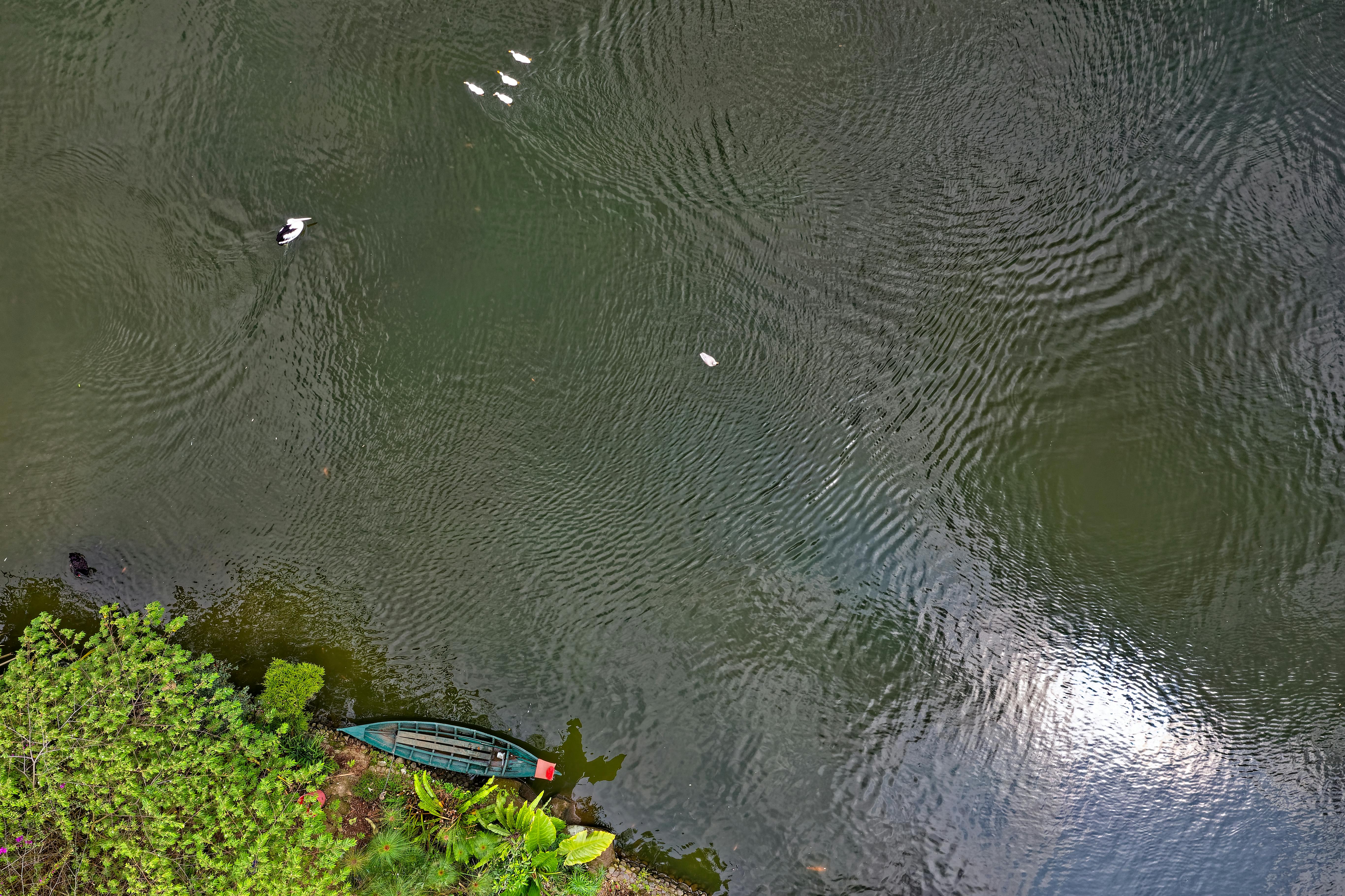Fruit trees can be a great addition to any garden, however birds can often cause problems by eating the fruit before it is ripe, or by damaging the trees themselves. Keeping birds away from your fruit trees doesn’t have to be difficult, and there are a few simple steps you can take to ensure your fruit trees remain safe and productive. In this article we will discuss some of the best ways to keep birds away from your fruit trees.The best way to deter birds from fruit trees is to use a combination of physical and auditory deterrents. Physical deterrents like netting, scarecrows, and hawk kites can be used to make the area around the tree unfriendly to birds. Auditory deterrents like sound machines or recorded distress calls can also be used to drive away birds. Finally, making sure there are no sources of food or water near the trees will help keep birds away.
Natural Methods to Scare Away Birds
Scaring birds away with natural methods can help keep them from disturbing your garden or outdoor space. There are several easy and effective ways to do this without hurting or harming the birds. One of the simplest methods is to use a scarecrow. A scarecrow made out of burlap and stuffed with straw can provide an effective visual deterrent for birds, as they will associate it with a predator. Placing a few of these around your yard may be enough to keep the birds away.
Another option is to use reflective materials such as aluminum foil and shiny ribbons or streamers. The reflection of the sun’s rays will scare the birds away. You can also hang CDs, old CDs or CDs with recordings of bird distress calls, from trees in your yard. The sound will frighten them and make them fly away.
You can also use predator decoys such as owls, hawks, or snakes to scare off birds from your garden or outdoor space. These decoys should be placed high up in trees so that they appear realistic and intimidating to the birds below. You can also use fake owls with moving heads that will help create a sense of danger for any approaching bird.
Finally, you can use noise-makers such as alarms, whistles, bells, and horns to create a loud and startling sound that will frighten any nearby birds away from your yard or garden. These devices should be used sparingly however, as too much noise may cause more harm than good by scaring away other wildlife such as beneficial insects or small mammals that you want in your garden.
Overall, there are many natural methods available for scaring away birds from your garden or outdoor space without harming them in any way. With a little bit of creativity and some basic materials, you can easily create an effective deterrent for any unwanted avian visitors in no time at all!
Using Visual Deterrents to Keep Birds Away
Using visual deterrents is an effective way to keep birds away from your property. Visual deterrents are designed to startle and scare the birds, which will make them stay away. Visual deterrents can be as simple as hanging items such as reflective tape, plastic owls, or other brightly colored objects in the area where birds are a problem. These items will reflect light and movement, which can scare the birds away. You can also use visual deterrents such as mechanical falcons or other robotic devices that will move and make noises when activated by a motion sensor.
You should also consider using netting or fencing to keep birds away from certain areas of your property. Netting can be hung along eaves, decks, balconies, or over gardens to prevent birds from entering certain areas. Fencing can be used to keep large birds like turkeys and geese off of grassy areas like lawns or golf courses.
It is important to remember that visual deterrents may not always work in all situations, so it is important to try different types of visual deterrents if one method does not seem to be effective. Additionally, you should be sure that the visual deterrents you use are safe for the environment and do not harm any animals or plants in the area. By using these techniques, you can create an effective barrier against birds without causing any harm or distress.
Implementing Sound Deterrents to Keep Birds Away
Sound deterrents are effective tools for discouraging birds from gathering around your property. They are specifically designed to produce a loud sound that will startle or frighten the birds away without causing them any physical harm. This type of deterrent is relatively easy to use and can be set up in just minutes. It can also be used in conjunction with other bird control methods such as netting and spikes.
When installing sound deterrents, it is important to follow all instructions carefully. Most units will be triggered by movement or sound, so it is essential to position them correctly and ensure that they will activate when the birds approach. It is also important to place the units at different heights in order to cover the entire area where birds may be gathering.
The most effective sound deterrents are those that produce a loud noise such as an alarm or a gunshot-like sound. These sounds will startle and frighten the birds away quickly, making them less likely to return in the future. It is important to keep in mind that these types of noises can also be disruptive for humans, so it is important to place the sound deterrents far enough away from any areas where people may be present.
In addition, it is important to remember that sound deterrents are only effective for a certain period of time before the birds become accustomed to them and no longer respond as readily. To ensure effectiveness, it may be necessary to switch out different types of sounds periodically or use multiple units at once.
Overall, implementing sound deterrents can be an effective way of keeping birds away from your property without causing them any physical harm or disruption for humans nearby. By following all instructions carefully and setting up multiple units at different heights, these devices can provide long-term protection against unwanted bird visitors.
Covering Fruit Trees with Netting
Netting is a great way to protect your fruit trees from birds, small animals, and other pests. It also helps to keep the fruits off the ground, reducing waste. Covering your trees with netting is relatively easy and can be done in just a few steps.
The first step is to purchase the netting you will need for each tree. You can find appropriate netting at most garden stores or online retailers. When selecting your netting, make sure it is made of durable material that is strong enough to withstand wind and other weather conditions. Also, be sure the mesh size of the netting is small enough so that birds and other pests are not able to get through it.
Once you have purchased the netting, you will need to measure around the circumference of each tree trunk and cut pieces of netting that are slightly larger than these measurements. Make sure there are no gaps between pieces of netting or they may not provide adequate protection from pests.
Next, attach the pieces of netting together by tying them with twine or using plastic ties, making sure there are no gaps between pieces so pests won’t be able to get through them. Finally, use stakes or poles to hold up the bottom edge of the netting around each tree trunk. Be sure to use stakes that are tall enough so that animals cannot reach through them and access your fruit trees.
By following these steps you can easily protect your fruit trees with netting and keep birds and other pests away from your harvest!

Installing Bird Spikes on Fruit Trees
Birds are a common source of damage to fruit trees, as they can eat the fruits before they are ripe. To prevent this kind of damage, many people install bird spikes on their fruit trees. Bird spikes are strips of plastic or metal that are placed around the trunks of fruit trees. The spikes make it difficult for birds to land and prevent them from eating the fruits. Installing bird spikes is a relatively easy task that can be done in a few simple steps.
The first step is to purchase the bird spikes. They can be purchased at most gardening stores or online. Make sure to buy enough spikes to cover the entire trunk of the tree. Once you have the spikes, you will need to measure and cut them to the correct length. It is important to cut them precisely so that they fit tightly around the trunk without leaving any gaps.
The next step is to prepare the tree trunk for installation. You will need to use a wire brush or sandpaper to remove any dirt or debris from the bark of the tree where you will be attaching the spikes. This will ensure that they adhere properly and last longer.
Once everything is prepared, you can begin attaching the bird spikes to your tree trunk using either nails or screws, depending on what type of material your spike strips are made out of. Make sure that all screws and nails are firmly in place so that they don’t come loose over time.
Once all of your bird spikes are installed, you should check periodically throughout the season to make sure that they are still secure and doing their job properly. If any of them become loose or damaged, replace them immediately so that birds cannot access your fruit trees again. With proper installation and maintenance, bird spikes can help keep your fruit trees safe from birds for many years!
Pruning and Trimming Branches Near the Fruit Trees
Pruning and trimming branches near the fruit trees is a necessary step in maintaining healthy trees that produce quality fruit. Pruning helps maintain the shape of the tree and encourages better fruit production by allowing more sunlight to reach the fruit-bearing branches. Pruning also removes diseased or damaged branches, which can help prevent further damage to other parts of the tree. Trimming keeps branches from growing too close together, which can lead to overcrowding and limited sunlight. Additionally, it prevents branches from becoming weak or prone to breakage due to heavy fruit production.
The best time to prune and trim near a fruit tree is during its dormant season, typically late fall or early winter. During this time there are fewer leaves on the tree, making it easier to identify damaged or diseased branches that need removal. Additionally, pruning during this period helps reduce the risk of disease-causing pathogens entering through open wounds caused by cutting off branches.
When pruning and trimming near a fruit tree, it’s important to use sharp tools such as pruners or loppers to make clean cuts that promote healing. Prune at an angle just above a bud so that new growth will come out from that point, and when trimming, use thinning shears to remove small twigs instead of cutting large branches all at once. Doing so will help prevent shock and damage to the tree from sudden large cuts in its canopy.
With proper care and maintenance, your fruit trees will stay healthy for years to come. Regular pruning and trimming will keep them well-maintained so they can continue producing quality fruits year after year.
Applying Repellents and Bitter Sprays
Repellents and bitter sprays are a great way to keep unwanted pests away from your home. Repellents work by masking the scent of food and other substances that attract pests, while bitter sprays make surfaces taste unpleasant, discouraging them from entering your property. To apply repellents and bitter sprays, you’ll need to choose a product that is specifically designed for the type of pest you’re trying to repel, such as mice, ants, or spiders. Make sure to read the instructions on the package carefully before applying. In general, repellents should be sprayed around the perimeter of your home and any areas where pests might enter. Bitter sprays can be applied directly to surfaces such as countertops, door frames, windowsills, and baseboards. Wait until the product has dried before allowing children or pets back into the area. Reapply every few weeks or as needed for long-term control.
If you’re looking for an alternative to chemical repellents and bitter sprays, there are also natural options available. Many essential oils can be used as a deterrent for pests such as spiders and ants. Citrus oil is especially effective when it comes to keeping away ants; simply mix a few drops with water in a spray bottle and spray around areas where ants might enter your home. Other natural deterrents include garlic or peppermint oil; these can be used in the same way as citrus oil to create a barrier that will repel unwanted pests.

Conclusion
Keeping birds away from fruit trees is an important step in maintaining a healthy and productive garden. While it is impossible to completely prevent birds from accessing fruit trees, there are various strategies that can be employed to make the area less attractive to them. Bird netting, wind chimes, and reflective objects can be used to deter birds from landing in or near the fruit trees. Additionally, chemical repellents such as garlic spray and hot pepper spray can be used as a last resort. By combining these strategies together, gardeners can create an environment where birds are less likely to cause damage.
Keeping birds away from fruit trees is not just important for protecting the harvest but also for preventing disease transmission among birds and other wild animals. By following these tips, gardeners can enjoy a bountiful harvest without worrying about bird damage or potential health risks.



